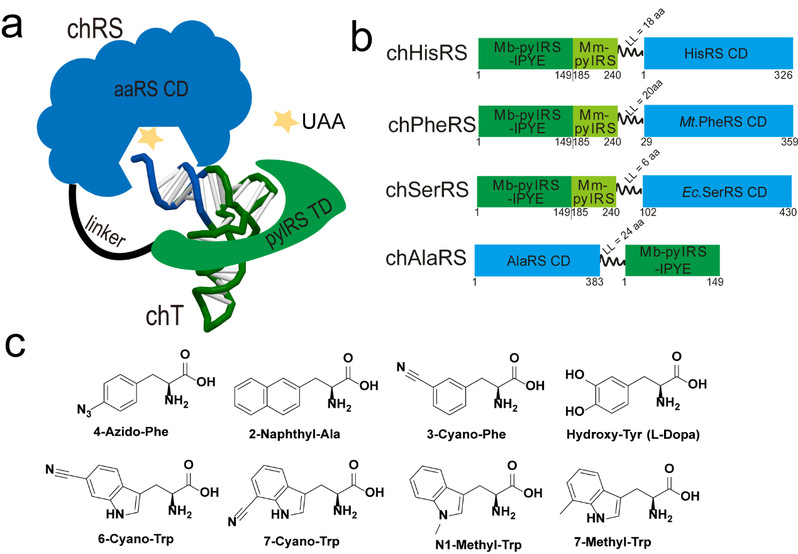On June 22, 2020, the Shixian Lin’s Lab at Life Sciences Institute, Zhejiang University, published a research article in Nature communications entitled “Chimeric design of pyrrolysyl-tRNA synthetase/tRNA pairs and canonical synthetase/tRNA pairs for genetic code expansion”.
An orthogonal aminoacyl-tRNA synthetase/tRNA pair is a crucial prerequisite for site-specific incorporation of unnatural amino acids. Due to its high codon suppression efficiency and full orthogonality, the pyrrolysyl-tRNA synthetase/pyrrolysyl-tRNA pair is currently the ideal system for genetic code expansion in both eukaryotes and prokaryotes. There is a pressing need to discover or engineer other fully orthogonal translation systems that allow unnatural amino acids with distinct scaffolds and functionalities to be incorporated into a wide range of living organisms efficiently. Here, through rational chimera design by transplanting the key orthogonal components from the pyrrolysine system, we create multiple chimeric tRNA synthetase/chimeric tRNA pairs, including chimera histidine, phenylalanine, and alanine systems. We further show that these engineered chimeric systems are orthogonal and highly efficient with comparable flexibility to the pyrrolysine system. Besides, the chimera phenylalanine system can incorporate a group of phenylalanine, tyrosine, and tryptophan analogues efficiently in both E. coli and mammalian cells. These aromatic amino acids analogous exhibit unique properties and characteristics, including fluorescence, post-translation modification. To our knowledge, most of these molecules have never been shown to be incorporated with fully orthogonal pairs. Therefore, these chimera pairs offer the potential for incorporation of de novo unnatural amino acids into target proteins for a variety of applications.
Dr.Wenlong Ding and graduate student Hongxia Zhao are co-first authors in this study. Dr.Shixian Lin is the corresponding author. This research was supported by National Natural Science Foundation of China (Grant 91953113), the National Key R&D Program of China (Grant 2019YFA09006600), the Fundamental Research Funds for the Zhejiang Provincial Universities (Grant 2019XZZX003-19, 2018QN81011), and China Postdoctoral Science Foundation (2019M652072).

Figure 1. The overview of our strategy and result highlights. (a) The schematic of chimera design, (b) Fully orthogonal pairs developed in this study, (c) UAAs incorporated with chPheRS/chPheT pair.
Link: https://www.nature.com/articles/s41467-020-16898-y



